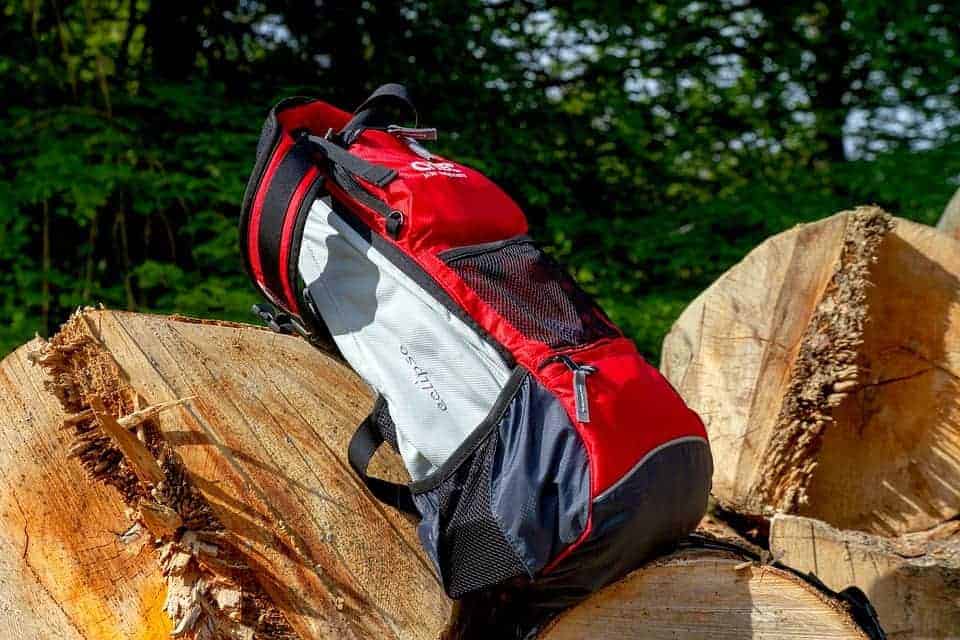Reducing the amount of gear necessary to complete a backpacking trip is the key to an enjoyable and triumphant trip.
This is something that many backpackers work on over the years. They find lighter-weight products and ways to get the same results with the absence of certain gear they once felt was necessary.
It takes time, practice, and usually a bit of investing.
In this article, we will share the top 10 ultralight backpacking tips. Each one will help in shaving off those vital pounds from your pack.

1. Cut Down the Non-Essential Items
The most important point among the top lightweight backpacking tips and tricks is to remove items that you don’t need. In case you have a standard packing list, check it again. Not every backpacking trip needs all those items.
Next, judge the utility of each item you pack. Do you need those extra hiking boots?
It’s best to make a list of all the items that you didn’t use in your last hike. Then you can cross out those in your next hike.
Quite often backpackers pack more items based on their fears. This might be the fear of cold or going hungry. While you must be prepared to face the unexpected, make sure to pack based on the facts and not your imagination.
At the same time, there are some items that you need to carry no matter what. These include medicines and first aid kits, navigation tools, and a knife.
2. Carry less Water
Obviously, you need to stay hydrated on the trail. But water is one item that makes your backpack heavier. How much water you need to carry depends on the length and nature of the trail.
If there are water sources along the way, you don’t need to overload your pack with 2 or 3 liters of water. With light and efficient water filters out in the market, drinking directly from streams or lakes is a feasible option.
In most cases, carrying a liter of water should be enough for the day if there are options of refilling. However, in dry areas and deserts, you will need to carry more water. Ideally, you should plan your route based on dependable water sources to minimize the carrying load.
3. Use a Scale
It’s simple. Without knowing how much you are carrying, you can’t cut down the weight.
So make sure to weigh each item in your backpack to identify the heavier items. The important thing is, don’t ignore the fractions. When an item weighs 3 pounds and 5 ounces don’t discard those extra 5 ounces.
Make no mistake about it. Those extra ounces can quickly add up to increase your pack base weight.
What’s the pack’s base weight?
It’s the final weight of your backpack, minus the water, food, and fuel.
So once you have listed all the items with their weight on a spreadsheet, pick the ones that you can do without.
4. Managing the Heaviest Trio
Three of the heaviest items on your back will be the tent, sleeping bag, and backpack itself.
Out of these, the tent is the heaviest. Selecting the right tent depending on the weather and altitude of the trail is vital. When it comes to double-wall tents, there are a few ultralight models that weigh close to 2 pounds. You can also try the much lighter tarp tents and pyramid-style tents.
When choosing a sleeping bag, you need to consider the temperature rating and comfort levels. It can really get cold at night so it might be best to bring a camping blanket also. Ideally, the sleeping bag should be within 1.5 to 1.75 pounds in weight. Note, you need to pack a lightweight sleeping pad too.
You might be tempted to pick a heavily padded backpack with steady interior frames. But it’s best to balance durability with the overall weight. A lighter design that weighs anywhere between 1.5 to 2 pounds will be a good choice.
5. Plan Your Food

Food is one item that can make the backpack heavy. Ideally, you need to make a meal-by-meal plan for each day. This will ensure that you’re not carrying too much extra or too little.
One option is, carrying dehydrated backpacker meals. That reduces the hassle of cooking and also makes the load lighter.
Note, food items with more water content, like fruits and fresh vegetables, will increase the pack weight. Items like protein bars, nuts, chocolates, and powder supplements can be good options.
When it comes to cookware, try to use items that can serve a dual purpose. Now, it might not be possible to ditch the stove entirely in all situations and eat “cold” food. So while choosing a compact but efficient stove. Note, the best backpacking stove is not only lightweight but also optimizes fuel consumption.
6. Choose the Right Materials
One of the best tips for ultralight backpacking is choosing the right materials. Materials like titanium are costly but can be a great choice for reducing weight. From backpack stays to tent pegs, they can be used almost anywhere.
Also, packing some synthetic fabrics will be a lightweight choice. They will also dry faster than cotton. Other options include using materials like 30D silnylon or Tyvek. These are not only ultralight but durable and budget-friendly too.

7. Repackaging Items
This depends on the length of your backpacking trip. In most cases, you don’t need to carry a whole pack of toiletries in your backpack. For example, instead of carrying the whole tube of sunscreen or toothpaste, you can carry them in small reusable bottles.
The same can be done with food items. Packing edibles like dry fruits in a zip-top plastic bag will help in removing unnecessary packaging and reducing weight. Besides, this will also make the items more compact for easy packing.
8. Replacing Old Gear
While letting go of your favorite backpacking gear can be difficult at times, it’s necessary. Quite simply, new gear is designed better and is lighter than older ones.
Moreover, new gear is also more durable in many cases. So replacing your old tent or sleeping bag with newer, lighter stuff is an investment to ensure more comfort and less load on your muscles.
That said, it might not be a feasible option for budget travelers. So make sure you balance the comfort factor with the budget.
9. Cut Down on the Electronics
When you are out amidst nature try to go primitive. Pack only the essential electronic items that you will need. Keep the extra chargers and battery packs behind. Also, use lithium batteries as they are lighter. Charge your headlamp batteries before the trip so that you don’t need to carry spares.
Beyond that, you can share the load with the team. You may not need two GPS units, DSLRs, etc. for a team of 2-3 people traveling together. It’s best to consolidate your resources and distribute the weight of common items among the group members.
10. Keep Learning
Even if you are a veteran backpacker, there’s always some scope to learn something new. As your experience grows, you can keep experimenting with new ideas to reduce the overall pack weight.
Also, you can learn a few ultralight packing tips and tricks from other hikers you meet.
Basically, the more you head out, the more you learn about your scales of comfort and necessity. That will allow you to pack even lighter for the next trip.
So these are some of the best tips for ultralight backpacking that you can use on your next trip.
With lighter gear, you’ll be more agile on the trail and less tired at the end of a long day of hiking. The secret is, to ensure your safety and comfort without packing excess weight.
And remember- “What you want is much different from what you need.”



